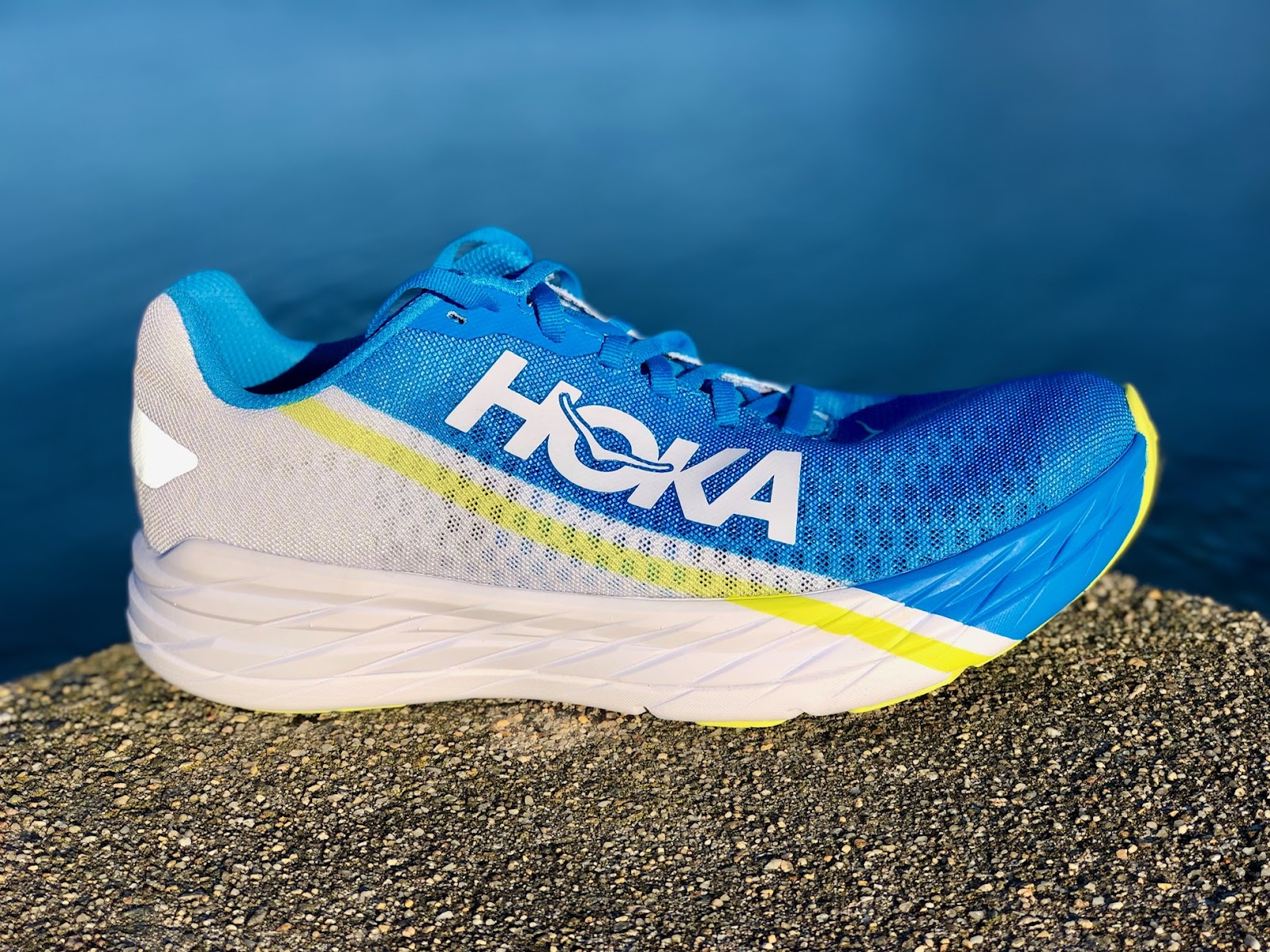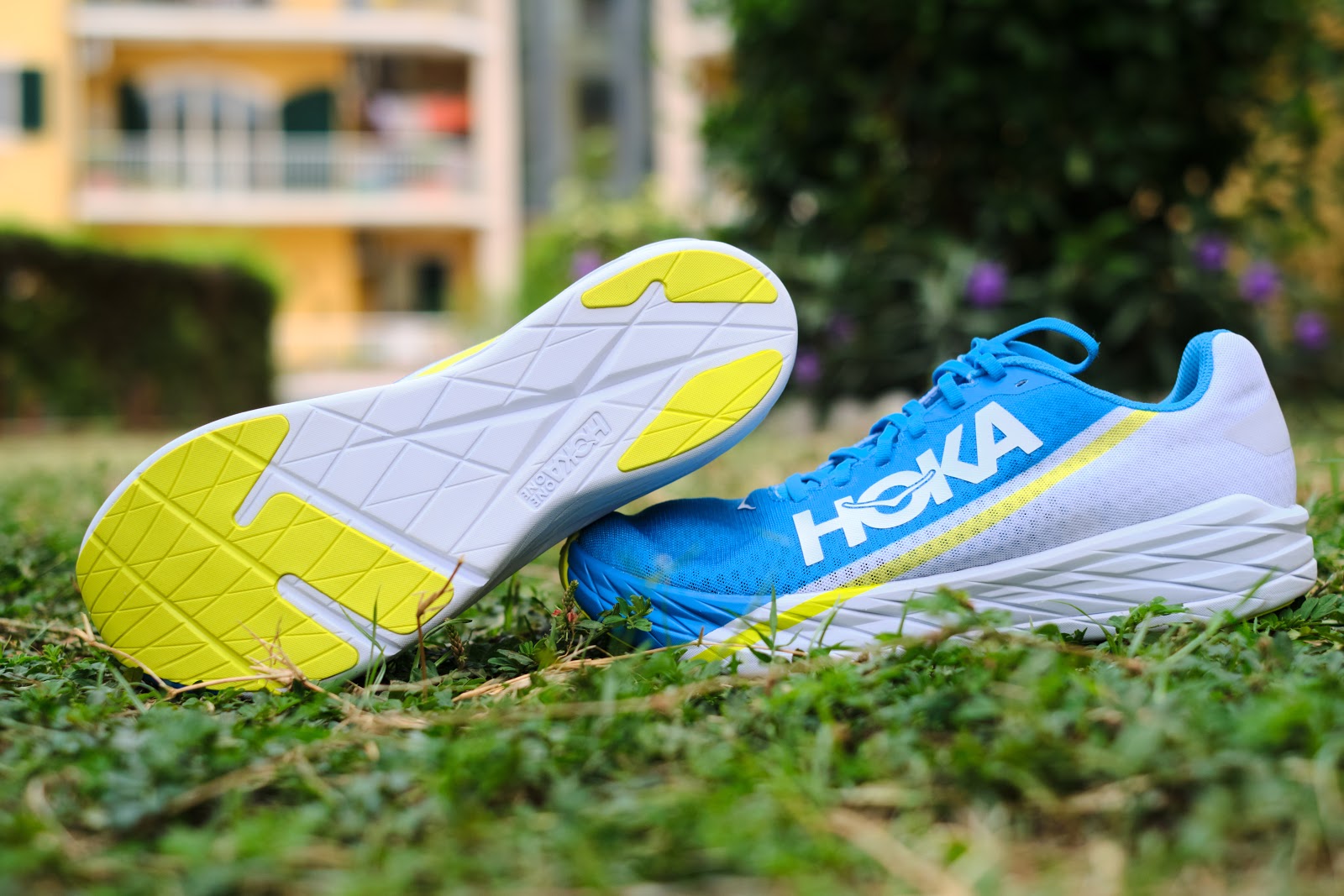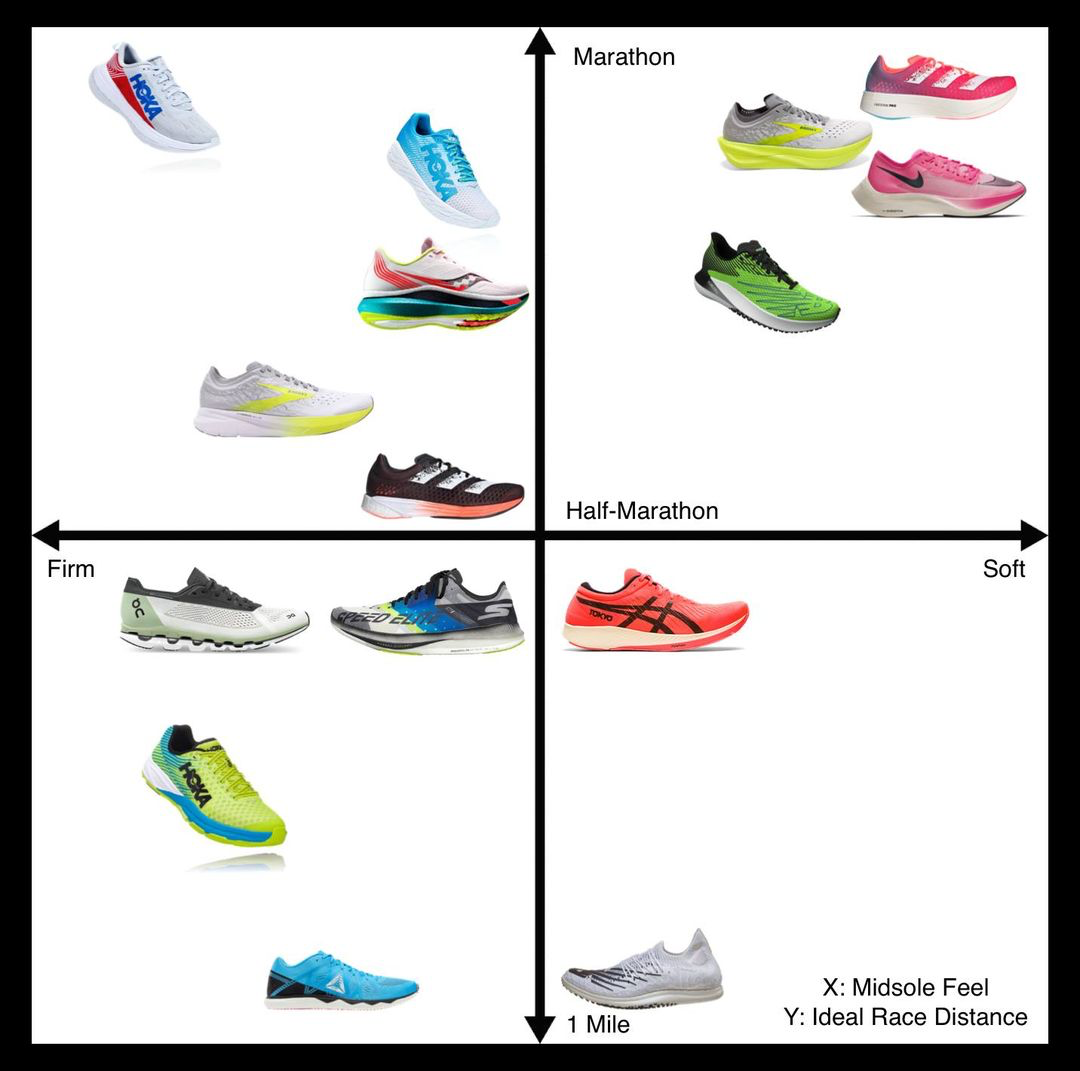Article by Joost De Raeymaeker, Derek Li, Michael Ellenberger, Sally Reiley and Sam Winebaum
Hoka One One Rocket X ($180)
 s
s
Introduction
Joost: I hate to admit it, but this is my first actual pair of HOKA running shoes. Well, actually Rocket X and a pair of Mach 4 I also got in for testing. Apparently, they are also very unlike other maximum cushioned HOKA shoes out there, so the fact that I haven’t run in something like the Clifton can actually be seen as an advantage, since I will only be judging the shoe for what it is, and not for something that a HOKA shoe is perceived to somehow have to be to qualify as a HOKA.

A couple of years ago, before all the supershoes, and in the aftermath of the barefoot and minimalist waves, I was doing one of those hard marathon sessions of over 35km (Daniels Elite 12 week program can be really tough) in my trusty pair of Nike Streak Flyknit when at the end of the session, I ran into a tall friend who seemed a lot taller still. On his feet was a pair of what I thought were humongous shoes: the original Clifton. He seemed to be really enjoying them. Since I was still over on the other side of the fence about cushioning, I didn’t give them much thought.
Fast forward to 2020 and World Athletics actually had to put a legal limit on stack height. This pair of Rocket X, with its 30mm height at the heel is actually a full centimeter lower than the Alphafly and the Adios Pro. Things have really changed!
In the Hoka catalog featuring US female Olympic Marathon trials winner Aliphine Tuliamuk I got a look at how Hoka divides its offerings into 3 distinct categories: Fly, Glide and Sky. They are pretty self-explanatory, with Fly being the collection of up-tempo shoes, Glide being the shoes with the “smoothest, softest ride” and Sky the trail and mountain collection.
The Rocket X sits at the top of the Fly category, being HOKA’s fastest and lightest plated racer. The carbon plate itself is the same as in the Carbon X, the brand’s endurance racer, but the foam is the lightest HOKA has ever made, the upper a breathable mesh and it has a rubberized outsole to further save weight. I got the White/Diva Blue colorway, which looks great. How does it ride? Read on.
Michael: We may have even said this before, but I think this time around really, really completes the first wave of super shoes from the major brands. Heck, Nike and Brooks have snuck in a couple revisions in the time since the window “opened,” but now Hoka One One joins Nike, Brooks, Saucony, ASICS, New Balance, Adidas, Skechers, and On with a formal carbon-plated flagship. And yes, one may argue that Hoka actually opened the wave with their initial Carbon Rocket and Carbon X back in early 2019 after the Vaporfly, and if that’s your take, then… I suppose we’re opening the third test window now! Either way, the Rocket X is here, and ready to roll, sitting near the middle line top left quadrant and leaning marathon in my graphic below.

Derek: I believe the Rocket X actually had a very limited release around the time of the US marathon Olympic Trials back in February but nobody really sat down to do a formal review of the shoes. It’s been a good eight months since that race, and we are finally seeing the commercial release of the Rocket X. Jim Walmsley called this shoe the “Trials Dagger” and he actually finished pretty high up in that race considering his Ultra running background, so this shoe already had some street credibility going for it. I actually have a bit of bias here. I got to do a couple of strides in the Rocket X back in early September. Some of my friends here in Singapore are Hoka sponsored athletes and they have been using the Rocket X for a couple of months now. I managed to try out the Rocket X in a US10 (my usual size is US9.5) for a couple of minutes. The shoe did not wow me at the time, but it could have been because it already had some miles in it. How will a fresh pair feel? I’m excited to find out.
Sam: I was curious to test the Rocket X having quite liked the Carbon Rocket despite its relatively flat 1mm drop profile and firmer ride which never left my legs beat up even after longer runs. Carbon X basically broadened the Carbon Rocket’s underfoot platform and went to 5mm drop but was heavy for a racer.
I was surprised that while a very “respectable” 30mm / 25mm stack Hoka’s contender, after all from the original max cushion brand well and before any other went max, didn’t push the stack closer to the IAAF limits of 40mm as say Nike, adidas, Saucony, and Brooks have. It is also on a relatively narrow underfoot platform for Hoka and is at a decent but not earth shattering low weight of 7.5 oz. With compression molded light EVA it seems the foam while softer than the Carbon Rocket is fairly conventional, more like adidas Lightstrike Pro than Zoom X or PWRUN PB.
Sally: I have been enjoying testing the numerous supershoes that have been released in this race-limited year of 2020, so I was thrilled to get the opportunity to test out the Rocket X, Hoka’s entry. I am still a Hoka rookie, with an embarrassing anti-Hoka bias caused by my first Hoka experience: I went for a run in the Bondi 6, and equated the experience to running in ski boots. I was NOT impressed. I have a narrow woman’s foot and “petite” legs (okay, my brother calls me “Birdlegs”) and the typical Hoka looks huge on me. But the Rocket X is not your typical Hoka: it actually looks more like a traditional shoe than the other carbon-plated race shoes. The test will be in the run!

Pros:
Michael/Sally/Sam/Derek/Joost: energetic and stable ride without a bouncy trampoline feel
Michael/Sam/Joost: very stable, more traditional riding “super shoe”
Derek/Joost/Sam: comfortable easy fit, excellent upper
Sally/Joost: great looking classic aesthetic (untypically Hoka in looks!)
Sally/Sam: very subtle plated rocker sensation
Sam: Plate location, just above outsole then a thin layer of foam, masks any harshness
Sam: far less “low” at the heel feeling than 1mm drop Carbon Rocket
Joost: The reflective element at the heel is a nice touch lots of brands are no longer applying.
Cons:
Derek/Sam: Weight is “OK” but for the 30/25 stack (less stack than most other super shoes) is up there
Joost/Sam: No real “meta-rocker” feel. Requires strong knee drive up and forward to activate
Joost/Sam/Sally: Laces are way too long
Sam: Fairly firm overall feel underfoot, if well cushioned. Wish for a touch more rebound and bounce from the midsole.
Sally: Tongue a bit short, especially when you need to use extra lace loop to secure heel hold (need more protection at ankle)
Michael: Fit concerns, especially at ankle and with lacing
Sally: Wish they had gender specific sizing as mens lasts tend to be wider, and I have a particularly narrow women’s foot
Michael: Heavy and not particularly bouncy give it a more performance trainer feel than true racer



